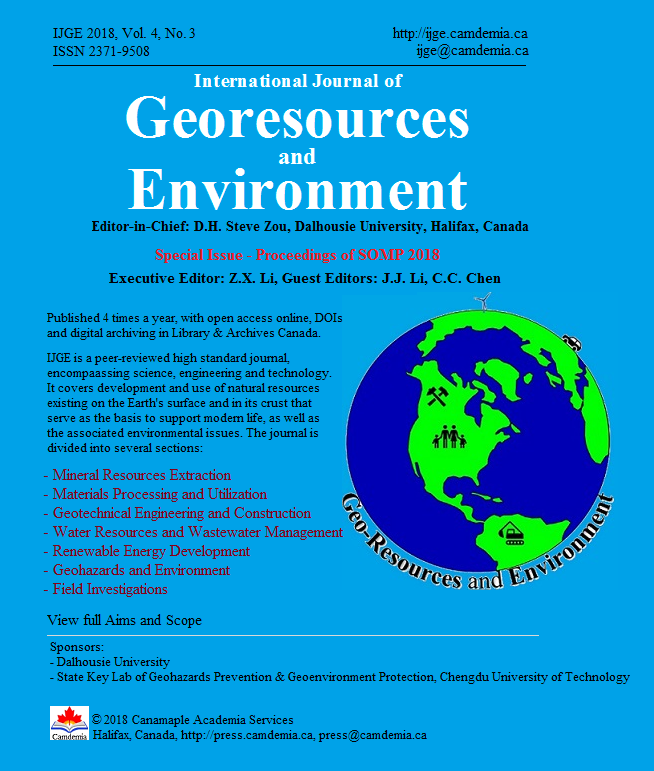The Potentials of Scientific and Industrial Collaborations in the Field of REE through China‘s Belt and Road Initiative
DOI:
https://doi.org/10.15273/ijge.2018.03.015Keywords:
rare earth elements, REE supply chain, raw materials, scientific collaborationAbstract
Within the framework of trade deals and infrastructure investments, China also wants to build a "belt of scientific cooperation" with countries and international organisations involved in the Belt and Road Initiative. This could create an opportunity for involvement of several European countries that have so far treated China‘s initiative with skepticism about the coherence and practicality of the project. A crucial issue that concerns both China and the European Union in the recent years is the establishment of an undisrupted supply of critical raw materials to satisfy the consumption demands of the modern high-tech world that we live in. Among the listed critical raw materials are the rare earth elements (REE). Accordingly, the development of an extended and sustainable REE supply chain is a significant research field in which both sides could collaborate and benefit from. It is crucial for the involved countries to utilise their advantages, work together and share knowledge to tackle technical, economic and environmental issues that govern the global rare earth industry. Hence, in this paper the possibilities of a potential cooperation are investigated in the context of collaborative research projects, academic networking, workshops and training for young scientists. The aim is to seek, find and bridge any gaps that exist between the two sides with a view to strong academic and industrial collaborations.Downloads
Published
Issue
Section
License
Copyright, Terms and Conditions
The International Journal of Geohazards and Environment (the Journal) is published by Canamaple Academia Services (the Publisher) online with open access, under a Creative Commons Attribution-Noncommercial license (CC-BY-NC) (http://creativecommons.org/licenses/by-nc/4.0/). Authors (the Authors) submitting papers (the Work) for publication in the Journal automatically agree to the following terms and conditions.
1. Under the license (CC-BY-NC), Authors give permission for others to share and reuse the Work, as long as the original source and author(s) are properly cited (i.e. a complete bibliographic citation and link to the Journal website) and the material is not used for commercial purposes. Any sharing or reuse must however indicate the original CC-BY-NC license terms of the work.
2. Authors transfer and assign to the Publisher all copyright in and to the Work. However Authors retain all proprietary rights except the copyright, related to the Work and also retain the rights a) to use, reproduce, distribute, and publicly display the Work in any medium in connection with the Authors‘ academic and professional activities, such as teaching, presentations and lectures, b) to create derivative works from the Work and to make full use of the Work in future research and publications, c) to authorize others to make any non-commercial use of the Work, d) to make both the pre-published and final-published versions available online in institutional and/or disciplinary repositories or on their own websites with a citation and link to the original paper published in the Journal.
3. Authors warrant that the Work is their original work, it is not copied from anywhere or anyone else, they are totally responsible for the authenticity, originality, validity and accuracy, and the facts and views are their own, that the Work contains no matter which is defamatory or infringes any literary or proprietary rights, intellectual property rights, or any rights of privacy, and that the Work has not been simultaneously submitted to any other journals or publishers. Authors further agree that their manuscripts whether accepted or rejected will not be returned and the rejected manuscripts will be disposed at the journal editor's discretion.
Disclaimer: The Publisher, the Journal and the editors accept no responsibility for statements or opinions expressed by authors. Use of information and materials in the Journal is the sole responsibility of users.


